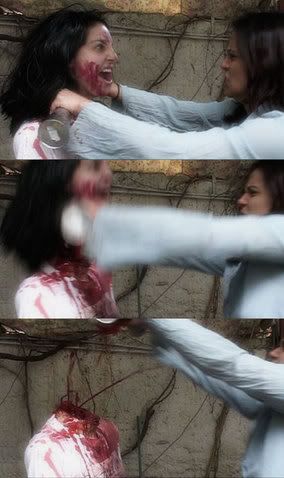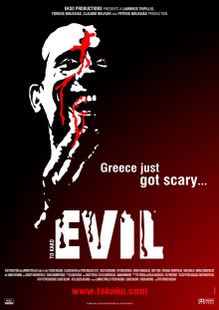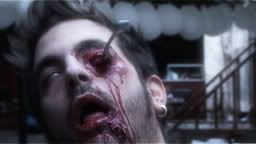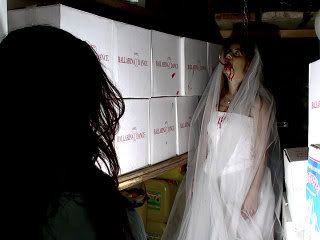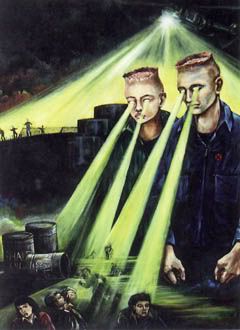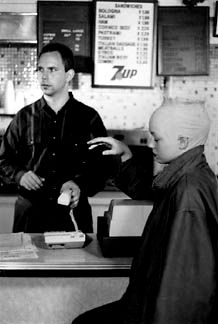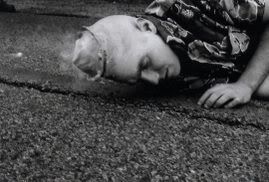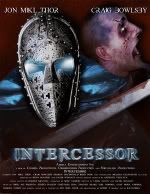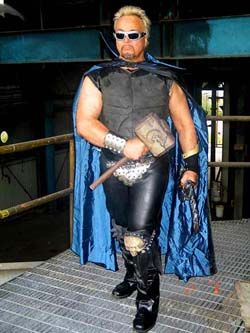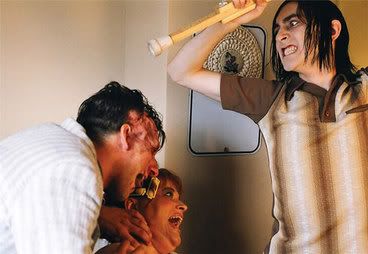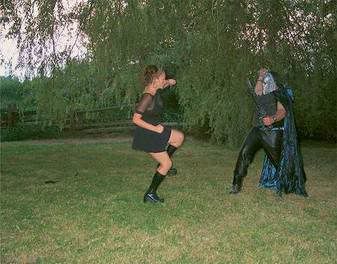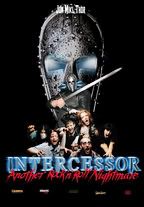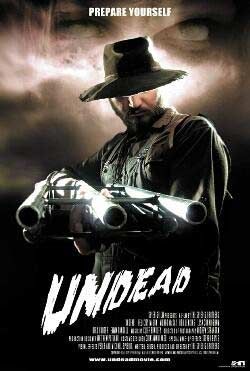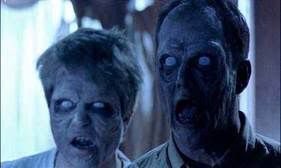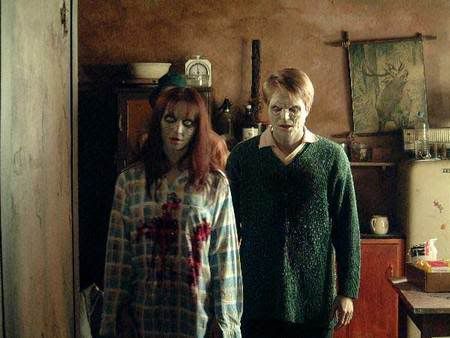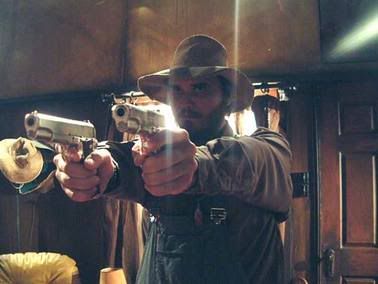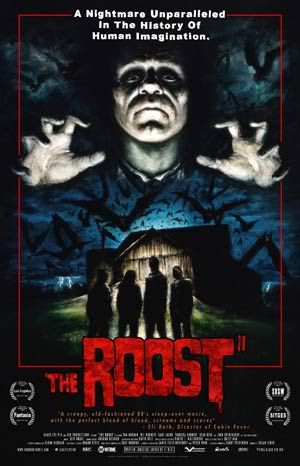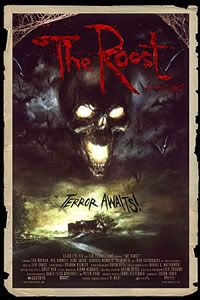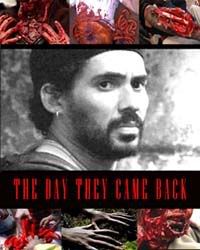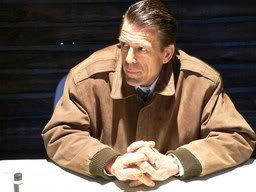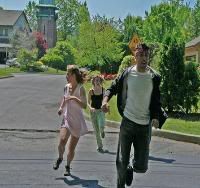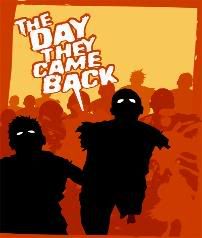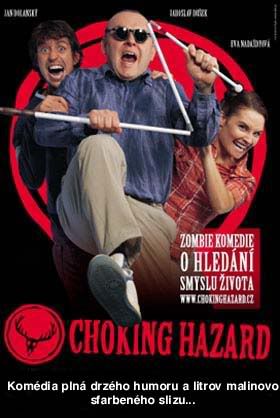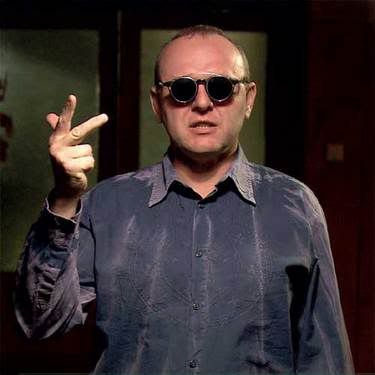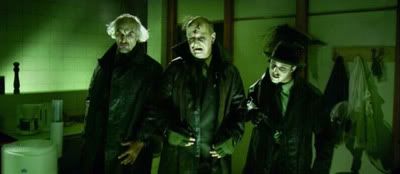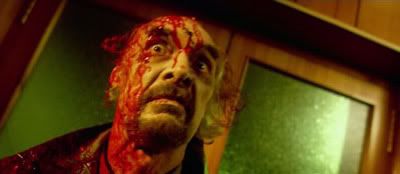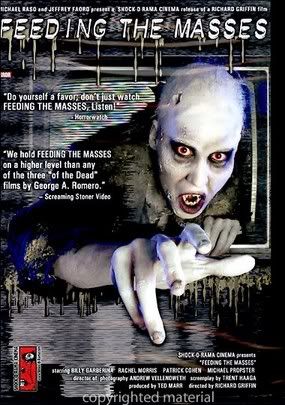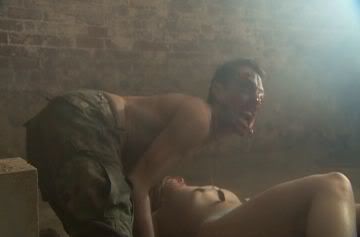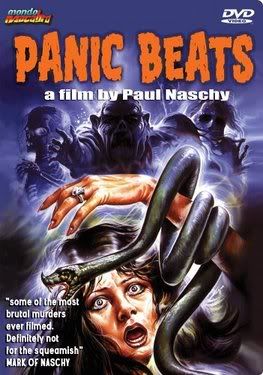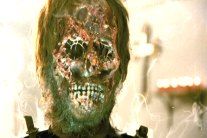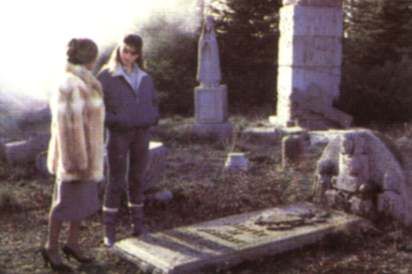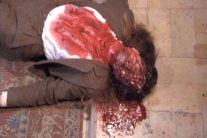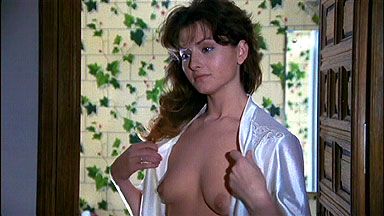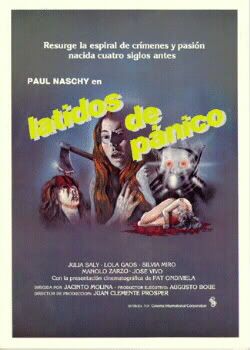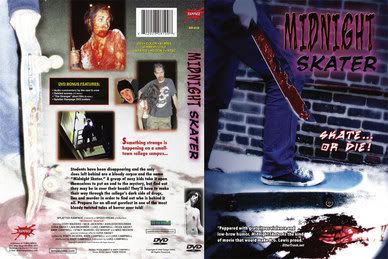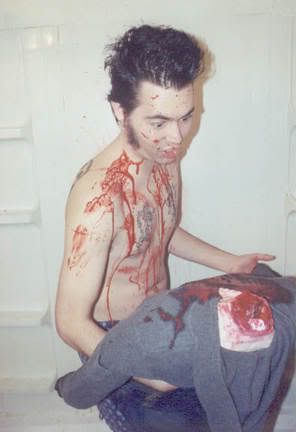Autopsy is no zombie movie—don’t let anyone tell you otherwise. It is, however, what you might expect when you sit down to partake in some classic Italian Giallo, expect maybe slightly more convoluted.
Mimsy Farmer plays Simona, a pathology med student working on her Masters thesis concerning the “difference between simulated and authentic suicides.” It seems as good a cause as any, I suppose, but Simone is certainly not the person to undertake this task and she proves this to us in just the first few minutes of the film by acting batshit crazy.
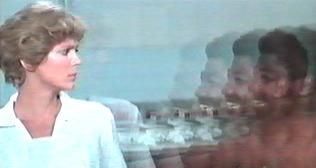
The film opens on a series of suicides, as apparently, Rome is having an epidemic of them. A women slits her wrists, a man puts a plastic bag over his head then throws himself in a river, a man sets his car of fire with himself in it, and finally, after killing his two kids, a man shoots himself in the chest with what looks to be a semi-automatic machine gun. Sounds promising, doesn’t it? Next, we’re in the morgue with Simona, her perverted morgue co-worker and bunches of bodies. During the autopsy she’s performing, she begins to have delusions that the corpses around her are getting up, screaming, smiling, flailing and ultimately having sex with one another. This is the extent of the “zombie” action, with the very brief exception much later in the film when a “suicide” victim returns in a quick hallucination in which she says something of no importance.
It’s not only all downhill after this; it’s also around corners, down back alleys and through winding tunnels. I’ve seen it said in other reviews of this film that one of its strong points is that it is “intricate” or “complex.” I am of the opinion that these reviewers feel that the more tangled and torturous a film is, somehow, the deeper and more intellectual it is. I strongly disagree. There are examples of where that can be said, such as Momento, and other where it cannot, such as Autopsy. This film is full of mystery, it’s true, but it’s not the sort of mystery that makes one ask “Who dunnit?” so much as “What the hell is going on?” It’s one thing to be intrigued and quite another to have to pause occasionally with your viewing partner just to try and see if you’re even close to being on the same page.
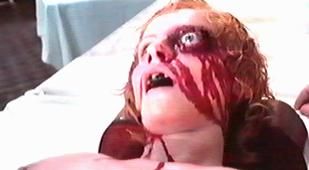
With the rash of suicides, there is one in particular that causes some ruction. Betty Lennox has shot herself in the face and her brother, Father Paul Lennox, is convinced it was a murder and not a suicide. The Lennoxes eventually become intricately involved with Simone, her boyfriend Edgar, her father Lello—but strangely, have nothing to do with the opening suicides. Simona has a theory that the rate of suicides go up in the summer months due to sunspots, but the film has less to do with that and more to do with her own relentless frigidity that Edgar tries desperately to thaw at every given opportunity. I for one could never figure out if Simona is going crazy because of her work and the goings-on around her, or if she was pretty screwed up to begin with. Frankly, it doesn’t really matter.

Director Armando Crispino, also responsible for L’Rtrusco uccide ancora (The Dead Are Alive, 1972) and Frankenstein all’italiana (Frankenstein: Italian Style, 1975), could have done better with a more coherent script. But then, he wrote the script, with co-writer Lucio Battistrada, who also co-wrote The Dead Are Alive with Crispino—so I suspect the blame for that lies squarely with them.
The score was composed by Ennio Morricone, also famously responsible for Per un pugno di dollari (A Fistful of Dollars, 1964) and Il Buono, il brutto, il cattivo (The Good, the Bad and the Ugly ,1966). This might be the films’ only saving grace, while not quite as memorable as some of his other work, it certainly helps rather than hurt this film.

As for the players, Mimsy Farmer (Simona) also appeared in Lucio Fulci’s Il Gatto nero (The Black Cat, 1981) and Ruggero Deodato’s Camoing del terrore (The Eleventh Commandment, 1987) with Last House on the Left’s David Hess. Classic horror hippie Ray Lovelock (Edgar) also appeared in Umberto Lenzi’s Un Posto ideale per uccidere (Oasis of Fear, 1971), Jorge Grau’s Non si deve profanare il sonno dei marti (Breakfast at Manchester Morgue, 1974) and Lucio Fulci’s Murderrock-uccide a passo di danza (The Demon is Loose, 1984). Barry Primus (Father Lennox) played Rake Brown is Scorsese’s Boxcar Bertha (1972) and Hermann Goering in Roger Corman’s The Red Baron (1971). Maybe if you’re a fan of any of these actors, you might find this worthwhile. If not, you might want to pass.
Taglines
It'll take you... apart!
There is one horror that goes beyond the living dead!
Great Line
Edgar: “Enjoy what’s left of the summer. Then, if you want,
just to please you, we’ll all commit suidice.”
